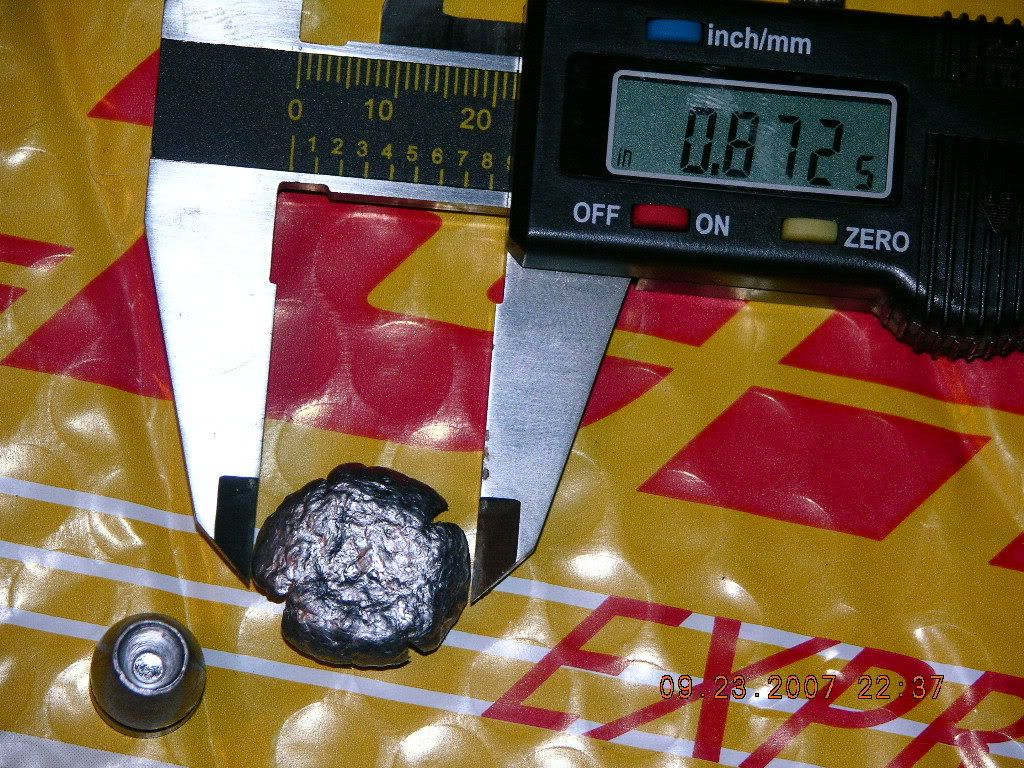I'm just curious, but why would a soft lead slug traveling at such a slow velocity cause so much blood shot meat? Seems to run counter to everything we all know about low velocity rounds.
Good question, Casull. I guess we don't all know as much as we think. I certainly did not expect such dramatic results myself. I give full credit to the meplat and the wide-flat-nose type design making as much use of the limited energy as possible.
This is my best guess as to where the boat got missed. The following are just ideas.
The thing is, projectiles have always been engineered around firearms. Firing the best bullet material made for thin-skinned game (dead-soft-lead) using combusting powder will foul your barrel fast (a problem airguns do not have!) so the whole jacketed bullet thing came into effect. This brought about bullets being designed to make use of a projectile that requires much more energy to function in a killing fashion.
From my experience with this ram, I can honestly say that the huge amounts of FPE in centerfire rifles isn't there to kill the game. It is there (for the most part) because the jacketed bullet designs require the energy to make them kill.
A fat chunk of dead-soft lead doesn't require nearly as much energy to operate as designed. For dangerous game a truly hard-cast bullet is a common one for handguns like the Casul.
Just running off thoughts to build a discussion.
I say this because the energy behind the 250 grainer with a .32 meplat on impact amounted to 230foot pounds of energy. I will be trying the same shot on another ram in the future using the 210grainer going 750+fps of the same WFN design to see what less bullet and more speed will do.
Is it possible that in the quest for more and more foot-pounds of energy to sell ammunition and rifles for new cartridges, we have missed the boat on what is doing the killing and how?
I don't remember the last time I heard "cause of death; kinetic energy". Sure SOMETIMES the energy is deposited and kills the animal with it, but other times the energy goes right through with the bullet and they will run far. Not a reliable design I'd say.
The soft-lead bullet appears to do it job faster than a hard one in a thin-skinned animal and the lower velocity; I don't know, maybe it is giving the bullet more time to do it's thing in there (LOL).
Just throwing thoughts out there for discussion. I am constantly doing research on projectile design which has lead me to my coyote round which hopefully, with proper shot placement, not create an exit wound on the hide.
Here is a test using a dead-soft lead Devastator hollow point that to an extent proves my point. hopefully the best round for harvesting fur for tanning and such. Try this with a jacketed bullet at this low-velocity!

